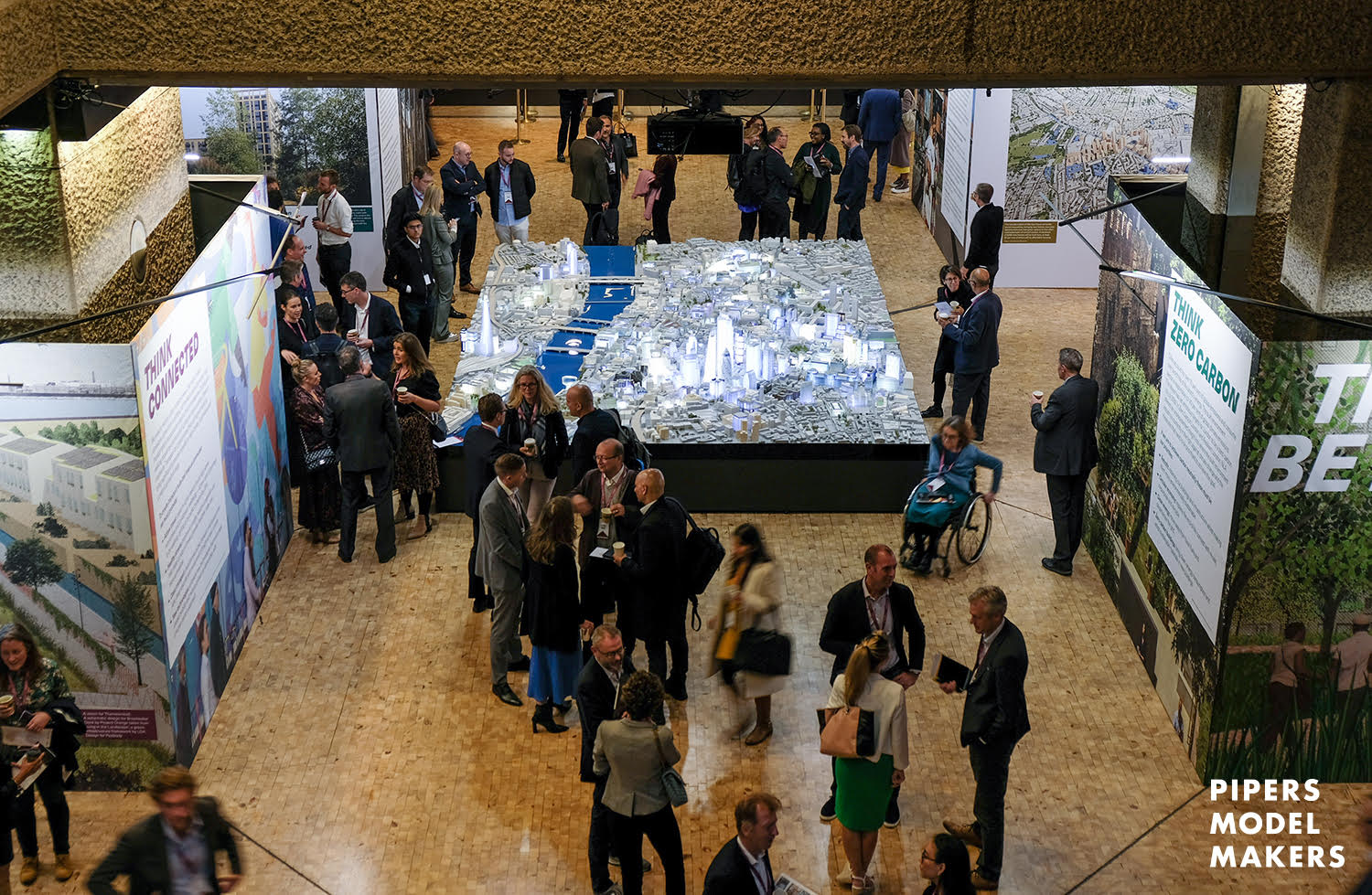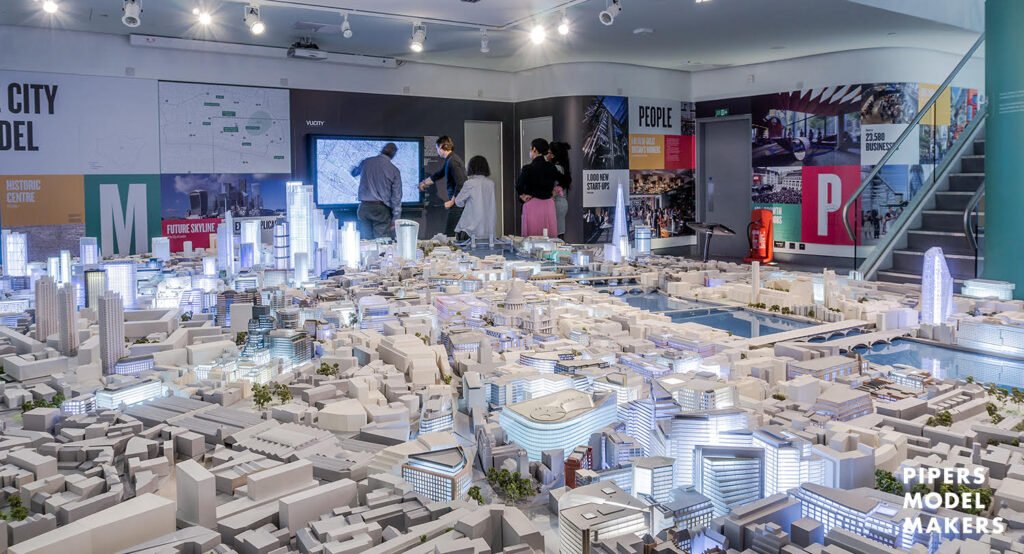David Taylor
What constitutes tall in your definition? Is it over 30 storeys? What is ‘tall’?
Gwyn Richards
The definition in the City’s local plan is 75 metres. That is what we use as the City of London definition.
David Taylor
What do you put that down to, that new wave?
Gwyn Richards
We think there is a very significant undersupply of best-in-class, grade A premium office space. The flight to quality. There is an insatiable demand of that at the moment, and also best in class environmental credentials, ESG, and so on. I think also not just new developments, as such; we’re seeing a huge amount of our work is to do with reuse, retrofitting existing buildings, and adaptations to existing buildings. And there’s a host of reasons for that. So bringing them from grade B, to grade A; I think it’s the embedded carbon, but also, it makes economic sense as well.
David Taylor
How would you characterize the change in the Square Mile over the last decade? And perhaps looking into your crystal ball, could you anticipate the main changes that you foresee in say, 10 years’ time?
Gwyn Richards
Well, I’ve been here 15 years, and I’ve seen the City becoming a much more vibrant offer for a wider demographic. So, 15 years ago, the idea of street food markets, and the gastro lunch culture and so on, was only starting to emerge. I think that change is only going to get much bigger in terms of the ‘Destination City’ aspirations of the City. To turn the City into a seven-day destination, and an evening destination of choice for a wider demographic of visitors, workers and residents. A lot of the planning decisions have accelerated that change. Hybrid working and the kind of emphasis on Tuesday, Wednesdays and Thursdays is another dynamic which is just going to accelerate that change. I think in the last 10 years, I’ve seen a huge increase in the retail offer and the vibrancy of that retail offer, especially in F&B. That is in a challenging environment at the moment because a lot of those retailers used to rely heavily on the five-day week, which is now maybe truncated into a three-day week. Which is exactly why we have to turn the City into a seven day visitor destination and into the evenings to help to revitalize the retail sector.
David Taylor
What path does culture play in that whole scenario going forward?
Gwyn Richards
I’ve always defined culture as a very wide definition. So, the culture is retail, the gastronomic offer, the Instagrammable moments on the elevated public areas of our buildings and so on, as much as the public exhibitions such as London Mithraeum, the Vine Street Roman Wall, and of course our amphitheatre here. The richness of the culture offer of the City is why we’re so successful, and our attractiveness to developers and investors, because of it’s rich cultural ecosystem. Certainly, after Covid, the cultural aspects of our life took a big hit. A lot of the cultural museums and exhibitions visitor numbers collapsed. So, there’s been a cultural resurgence since then, with the decision of a new home of the Museum of London in particular as well as the Migration Museum’s new home. I think culture is absolutely key to our attractiveness as a place to work and visit, but also in terms of ‘Destination City’, a seven day destination for all.
David Taylor
What impact do you think new transport infrastructure like the Elizabeth Line has made thus far?
Gwyn Richards
It’s had a huge impact, and the upgrade to Bank Junction and all the other transport improvements. Clearly, when the Elizabeth Line was nearing completion, we were in Covid times. So transport and the number of travellers coming in day to day has always been a changing dynamic. Over ninety per cent of the people who come into the City come in via public transport, walking or cycling. That’s a phenomenal rate globally, and even the Scandinavian cities we meet frequently here, they can’t get anywhere near that. So connectivity and public transport is absolutely vital. And that’s why we are a very sustainable place for increasing the density with tall buildings and major developments.
David Taylor
I’m interested in you mentioning Scandinavian cities that you meet here. Do you have delegations coming across to share best practice and do you go over there as well to find out about their cities and model the Square Mile on those cities?
Gwyn Richards
Absolutely. Pre-Covid, we used to go to the conference on liveable cities in Copenhagen. And we met our counterparts in Copenhagen. We met the planners from Paris, Barcelona, Frankfurt, Toronto and other cities; we had two delegations from Finland, Helsinki recently. All of that started to seize up after Covid, but it’s all starting to open up again. And it’s really rewarding that we share our own experiences, and you learn lessons from them as well.
David Taylor
What are you exporting in terms of ideas? And what are you importing in terms of ideas from those cities, chiefly?
Gwyn Richards
I think the importance of public transport and active travel is something that the City of London in particular is seen as really exemplary. Even from those cities where you’d expect that to be key. The other thing that I think that they’re very impressed with what we’re doing is the inclusivity agenda, and the elevated roof gardens and the roof terraces and river terraces and Sky Gardens, which is a very different dynamic. They are all free to visit, which is almost inverting that kind of vertical hierarchy where the higher you are in a building with the best views, the richer you are. So, we’ve inverted that, and they’ve been very interested in that dynamic, which is really leading the world in that sense. The other impressive piece of work that we’ve done which has really caught the imagination globally is the microclimatic modelling work that we’ve done re-modelling and thermal comfort modelling, this new toolkit to understand the impact of development on the microclimatic quality of public realm. And the work that we’ve done in this exhibition in here in the Guildhall today about understanding global temperature changes and heat stress, especially after the hot summer we’ve had. Also, how in 2080 what the City’s microclimate will be, and what we can do as planners to ensure that we can manage and mitigate some of that. So: our climate action resilience work that we’ve been doing has been quite an eye opener to a lot of the cities as well.
David Taylor
Fantastic. I jotted down a couple of buildings that caught my eye in terms of future schemes to look out for including 55 Bishopsgate and 85 Gracechurch Street. They are presumably included in that list of kind of new wave of tall buildings that you were mentioning before, are they?
Gwyn Richards
We are hoping to present 85 Gracechurch Street to the planning and transportation committees in spring probably March. I think 55 Bishopsgate will probably be a summer committee. We’re also doing a lot of work with existing consented tall buildings to update them in terms of post Covid – new external terraces, all de-carbonised electric, natural ventilation, and so on, and better cycling facilities so that those old consents are fit for purpose now. We’re hoping to pull all of this together in a refresh of our local plan. So, the draft replacement local plan is a post Covid local plan. There’s a lot of work going on now into updating it in terms of the sustainability agenda – whole life carbon. Actually, that’s another thing that we’ve been really ground-breaking in internationally – the planning advice note on whole life carbon optioneering that we’ve published. That is the first time somebody has started to discipline the way that people look at embedded carbon and the whole life carbon story. So that’s been really well received internationally as well – even by the countries that you’d expect to be leading the way on this such as Germany and Denmark and Scandinavian countries. So all of this will be pulled together in the new local plan. We will hopefully have an updated draft by summer of this year, to go out to consultation.
David Taylor
Great. Well, best of luck with all of that! All right, I’ll let you get on to do all this stuff! Thanks Gwyn!
Gwyn Richards
No problem! Thanks!



